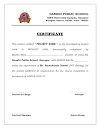If you have any suggestions or additions, please do put in the comments section.
Happy Studying :)
| 👨🔬 Scientist | 🔬 Contribution |
|---|---|
| Gregor Johann Mendel | a) Father of genetics b) Conducted experiments for the first time to understand the pattern of inheritance and variation. |
| Reginald C Punnett | Punnett square |
| Galton | Polygenic inheritance |
| De Vries, Correns, Von Tschermark | Independently rediscovered Mendel's work. |
| Walter Sutton & Theodore Boveri | Chromosomal theory of inheritance |
| Thomas Hunt Morgan | a) Experimental verification of chromosomal theory of inheritance b) Linkage and Recombination |
| Alfred Sturtevant | Chromosomal or linkage maps |
| Henking | X-Body (Chromosome) |
| Friederich Miescher | Nuclein |
| Maurice Wilkins & Rosalind Franklin | X-ray diffraction data that led to DNA structure discovery |
| James Watson & Francis Crick | Proposed the structure of double helix model for the DNA Semi-conservative mode of DNA replication |
| Erwin Chargaff | Chargaff's Rule: A+T = G+C or A+T/G+C=1 |
| Francis Crick | Central Dogma in molecular biology tRNA as adapter molecule |
| Frederick Griffith | Transforming principle (carried out a series of experiments with streptococcus pneumonia) |
| Avery, MacLeod, McCarty | Determined the biochemical nature of the transforming principle |
| Hershey & Chase | The unequivocal proof that DNA is the genetic material |
| Meselson & Stahl | Experimented to prove DNA replicates semi-conservatively |
| George Gamow | Genetic codon should be made up of 3 nucleotides |
| Hargovind Khorana | Developed a chemical method for the synthesis of RNA molecule with defined base combination |
| Marshall Nirenberg | Put forward a cell free system for protein synthesis that help in deciphering the code |
| Severo Ochoa | Showed the polynucleotide phosphate also helped in polymerizing RNA with define sequence in a template in depend manners |
| Jacob & Monod | Lac operon model of gene regulation |
| Frederick Sanger | a) Developed method for determination of amino acid sequences in protein. b) Automated DNA sequencing |
| Oparin & Haldane | Proposed that the first form of life could have come from pre-existing non-living organic molecules (e.g. RNA, protein, etc.) and that formation of life was preceded by chemical evolution. |
| Louis Pasteur | Disproved spontaneous generation. Experimentally demonstrated that life comes only from pre-existing life. |
| S.L. Miller | Experiment supporting chemical origin of life |
| Charles Darwin | Father of Evolution Natural selection Adaptive radiation Reproductive fitness |
| Alfred Wallace | Natural selection theory; co-contributor with Darwin |
| Lamark | Use and disuse theory of evolution |
| Thomas Malthus | Proposed Malthusian theory of population - this theory states that population growth will always tend to out run the food supply. This theory is thought to influence Darwin. |
| William Harvey | Discovery of blood circulation |
| Hugo de Vries | Developed mutation theory - saltation |
| Hardy & Weinberg | Hardy-Weinberg principle - genetic equilibrium in a population. |
| Norman Borlaug | He improved methods of cultivation and developed a robust strain of wheat. Semi-dwarf wheat. |
| Alexander Fleming | Discovery of penicillin (antibiotic) |
| Ernest Chain & Howard Florey | Established the full potential of penicillin as an antibiotics. Mass production and application of penicillin |
| Cohen & Boyer | First recombinant DNA |
| Gause | Competitive exclusion principle |
| MacArthur | Resource partitioning in warblers |
| Edward Wilson | Coined the term biodiversity |
| Robert Costanza | Valuation of ecosystem services |
| Robert May | Estimated global species diversity (~7 million) |
| Alexander von Humboldt | Species richness increases with area (up to a limit) |
| David Tilman | More species = stable ecosystems His long-term ecosystem experiments states that plots with more species showed less year-to-year variation in total biomass |
| Paul Ehrlich | Rivet popper hypothesis (ecosystem stability) |








2 Comments
Thank you. really useful.
ReplyDeleteThanks a lot 😊
ReplyDelete